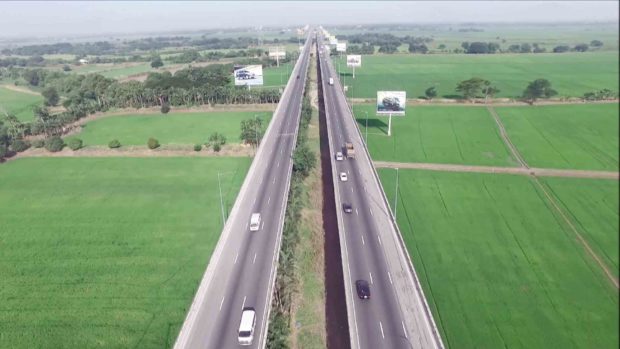
VITAL LINK The Candaba viaduct along the North Luzon Expressway is a vital infrastructure linking the provinces of Bulacan and Pampanga to Metro Manila. It has been identified by disaster response officials as a lifeline for residents once a strong earthquake hits the National Capital Region. —PHOTO COURTESY OF NLEX CORP.
CITY OF SAN FERNANDO — The Candaba viaduct along the North Luzon Expressway (NLEx), which has been identified as a lifeline for Metro Manila residents evacuating to Bulacan and Pampanga provinces in case of a strong earthquake, is in good condition, according to an official of the company operating the expressway.
The 5-kilometer viaduct, also called the Pulilan-Apalit Bridge, was assessed by a consultant to be compliant with safety standards, Raul Ignacio, NLEx Corp. senior vice president for construction and engineering, said at a forum of the Pampanga Chamber of Commerce and Industry here early this month.
Major movement
Built above rice fields and fishponds at the Candaba Swamp in 1976, the viaduct is considered a vulnerable part of the 80-km NLEx and may be cut off should a 7.2-magnitude earthquake, dubbed the “Big One,” strike the Valley Fault System (VFS).
The East Valley Fault straddles 10 km in Rizal province while the West Valley Fault runs for more than 100 km through the provinces of Bulacan, Rizal, Cavite and Laguna, and Metro Manila.
It is said that the VFS is ripe for a major movement, based on its pattern of moving every 600 years.
Bridge, relocation
The viaduct may sway like a snake, one of the possible scenarios drawn up in case of the Big One, according to Renato Solidum Jr., undersecretary for disaster risk reduction and climate change.
NLEx Corp. is prepared to put up a bailey bridge to deal with emergencies at the viaduct, Ignacio said. It also plans to relocate informal settlers under the viaduct to get them out of harm’s way, he said.
The Manila North Road, commonly known as the MacArthur Highway, serves as the other evacuation road to Central Luzon.
Solidum said the potential risks from a 7.2-magnitude earthquake were higher because more people lived in Metro Manila and more structures were exposed to the VFS. The capital is home to more than 10 million people.
Without engineering and social interventions, and should it strike at night, the Big One in Metro Manila could kill 31,000 people and seriously injure 130,000 others, according to the Philippine Institute of Volcanology and Seismology. —TONETTE OREJAS